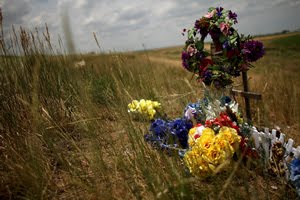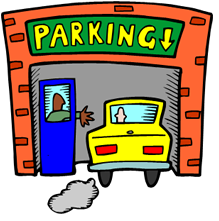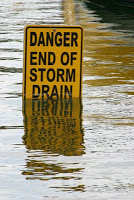Tag Archive: vehicle safety

Survivor’s Guilt: Teens in Motor Vehicle Crashes
February 21, 2012
A single car crash in North Carolina last month led to the death of the driver’s twin sister.
Another news report from the past month regarding a teen who had been killed in a single vehicle car crash the teen’s girl friend was quoted as saying:
“Cameron was drinking and we got into a fight. I told him to find another ride home. I said, ‘Get out of this car, you’re being disrespectful,'” Talia said, gasping between tears and raising her arms to the sky. “Why didn’t I drive him home?”
Survivor’s guilt, which is most often associated with victims of combat, can occur in anyone who has survived any type of trauma whether they were directly involved or not. The guilt from wishing they had done something different that may have averted the event can lead to long-lasting psychological problems. The most common form of psychological trauma resulting from survivor’s guilt is Post Traumatic Stress Disorder (PTSD) which can result in life-long, debilitating problems for the victim. This is why high schools, who experience the death of one of their students, make extra counselors available to the student body immediately after the event.
If your teen has been involved in a crash in which someone died or was horribly injured or even if they were weren’t involved but were closely associated with the victim, you will need to help them through the grief process and you should be on the lookout for the warning signs of PTSD.
Grief – The grief process is something everyone who has experienced the loss of a friend or loved one must go through and it occurs in specific stages;
- Denial and Isolation.
- Anger.
- Bargaining.
- Depression.
- Acceptance.
Guiding your teen through all of the stages to acceptance, can be a long and painful process. If the guilt is left unresolved, it can lead to a multitude of psychological issues.
Don’t try to tell your teen how they should act or feel – No one can truly understand how a grieving person feels and trying to tell them their emotions are wrong or unhealthy can only compound the problem. Instead, sympathize and let him or her vent their feelings. Holding in or suppressing one’s feelings can be harmful.
Suggest that they express their grief in a creative way – One example of a creative expression of grief is the Facebook page mentioned in the first article of this newsletter. Writing a song or a poem, creating a memorial to the victim are all positive expressions of grief. Getting involved in programs to prevent future tragedies can give your teen some sense of control over events.
Watch for signs that your teen may be “numbing out” – One common expression of grief is to try to suppress the feelings by turning to alcohol or drugs. This is an especially dangerous form of expression and can only make matters worse.
Withdrawing from friends and events – Your teen my stop engaging in their usual activities or back away from friendships. This part of the denial and isolation stage is designed to prevent any future relationships and thus, the chance of losing someone else that may be close to them. To make up for the lack of relationships, your teen may turn to alcohol or drugs or withdraw into video games. Their school performance may suffer.
Grief Triggers – There will be times when reminders of the loss of their friend will be especially acute; such as anniversaries of the event, birthdays, school proms, graduation. Be aware of these triggers and be prepared to help your teen through the grief process all over again.
Talk, talk, talk, talk, talk – Trying to put the past behind you by ignoring the fact that the event happened won’t make it go away. Talking through the issues is the best form of grief expression. Be there for your teen, allow them to talk it out and listen without judging.
Don’t be afraid to seek professional counseling – Unresolved, PTSD can lead to severe depression, paranoia, isolation, and drug dependence. If left unresolved, these issues can affect future generations. Be on the lookout for warning signs and understand that the issues may be too big for you to handle. Seek professional psychological help.

Parking Lot Safety
February 7, 2012
Finding a convenient and safe parking spot is as much a part of operating a vehicle as driving itself. Depending on the kind of parking situation, it can be as safe as being the only vehicle in that spot, or it might even prove to be more dangerous than the road itself.
Not all parking lots are created equal, even the parking spots don’t come in one flavor, hence the need for some parking lot safety tips.
Some parking spots may be a spot on the side of the road, or somewhere above a multi-tiered structure. Some spots may be straight-in, diagonal and some may not even have guiding arrows to help you. Paying attention plays a huge part in making sure you pick a perfect place to park.
Here are some of the necessary precautions when finding the perfect parking spot:
- Are the doors locked? Are the windows rolled up? Even if you’re leaving for a couple of minutes, you should always do this.
- As much as possible, don’t leave valuables in the car. Make it a habit: if you have the detachable type of GPS or radio, always bring it with you. GPS devices may make life easier, but if stolen, it gives thieves a treasure map to your house.
- Check your phone/plug in your earphones/do errands when you’re inside where you need to be. Your full attention is required in getting out of your car to getting to the destination.
- Is there parking security? If there’s an available spot within the view of security, park there. Not all parking lots are secure.
- Be wary of strangers loitering about the parking lot. The car may be parked, but they may be after you. Notify security if there’s anything out of the ordinary.
When your errands are complete, there are other precautions to be taken:
- Have your keys ready. Fumbling about and digging inside your purse or pocket for the keys in front of your car leaves you vulnerable.
- Always remember where you parked your vehicle.
- Scan the area around your vehicle. Be aware if someone may be following you.
- Check in and around your vehicle. Someone may be hiding behind your car, in front or in the back seat.
- Once safely in your vehicle, lock up and leave.
When backing out of a space, be aware of people or vehicles moving in front or behind your vehicle. Be aware that visibility may be limited when there are bigger vehicles parked next to you. Never put yourself at risk. A parking lot is just a place where you park, not to hang out in.
Additional Tips for Vehicle Theft Prevention from Department of Transportation’s (DOT) National Highway Traffic Safety Administration (NHTSA).

Cars and Waterways
June 28, 2011
Although Florida is known to have many canals, lakes, pools and waterways, many recreational communities in all states have these types of waterways also, and with summer these areas will soon be busy with many visitors.
Could your car end up in the water because of a mistake, like hitting the gas instead of the brake, or being involved in a crash and suddenly you are pushed into a situation that you didn’t expect. Sometimes flooded areas can merge together with a canal or river or lake. What do you do if you find yourself in your car that went into the water?
The answer of course is “Be Prepared”. Have a Plan. There are several acronyms that might help you remember and that can apply to such situations.
The SOS-GO is one emergency reminder.
S – Stay calm
Evaluate your situation quickly. Realize that there may be pressure against the doors and they cannot open immediately.
O – Open the Window
You can roll down the window and leave the vehicle. If you have power windows it may be more difficult. Sometimes the window will work for a few minutes or they could stop working as soon as you hit the water. If that becomes the case, you should have something available to break the window. There are commercial tools available on-line, in dealerships or in auto supply stores. There is the window punch which can be on a key chain or the life-hammer which is mounted in the car somewhere near the driver.
S – Seatbelt must be disengaged.
If you cannot unclip your seatbelt, the life hammer usually has a way to cut the belt.
GO – Get Out
It is most important to leave your vehicle as quickly as possible.
The other acronym that is sometimes used as a reminder is POGO.
P – Pop your belt.
This tells you first to open your seatbelt. If you cannot get it off, cut it with your tool.
O – Open your door.
If the door cannot open, break the window.
GO – Get Out.
Again, the most important thing to remember is that you cannot stay in the vehicle to wait for help.
Some suggestions for surviving a sinking car include being calm and working quickly to get out. Most vehicles will float for only a minute or two before they begin to submerge.
5 steps to safety include:
- Unclip your seat belt or cut it.
- Roll down your window quickly or break it.
- If you cannot get the window to open, look for another means of escape like the rear window or sunroof.
- If there is no other way to get out, try to open the door. The door may be very heavy, make sure it is unlocked.
- If the door will not open, try to be calm, wait until the inside of the car is almost filled with water. Take a deep breath and keep trying to get the door to open. When the pressure is equal the door will open.
The most important things to remember is that you must find a way to GET OUT.

Driver Education Information That Could Save Your Life
May 21, 2010
Driver education can save thousands of lives. Don’t believe me? Imagine a car and a gun side-by-side. Tell me, which do you think has taken more teen lives? If you feel like the answer should be the gun, think about this for awhile: which one of the two do you see more often day-to-day? While most of the country pays close attention to the subject of gun control or the views of the National Rifle Association, very little focus is given to the number one cause of death for teens- Car Crashes.
The need for driver education is very important because so many of us take the right and the responsibility of driving every day for granted. We travel the roadways and go about our daily routines without the safety reminders we all need. And if you are a new driver— you need the reminders more frequently. We’re going to discuss the basics — the lessons you should be absorbing. This is by no means a substitute for actual driver education, just a summary of the information you may need a refresher on and could save your life.
Buckle Up – Before even starting the car or stepping on the accelerator, always fasten your seat belts. Each year, over 400,000 teen drivers between the ages 16 and 20 get injured in car crashes. Wearing your seat belt will help save your life. It will keep you from being thrown out of the vehicle, lessen the force of impact when hitting the dashboard or other interior spaces in the vehicle and reduce the collision forces on your internal organs. Coupled with air bags, what would be a fatal crash can be reduced to one with only minor injuries. This is also true for your passengers. Make sure they fasten their seat belts. In the event of a crash, if they are not properly belted they can literally become a flying object within the car causing serious injury themselves and other occupants.
Overcrowding – When driving a car, you are not only responsible for your safety, but also for the safety of all your passengers. Being a teen driver already increases your crash risk, but having other teens in the vehicle actually doubles that. Teens make up about 12% of all fatal car crashes in the United States. Overcrowding not only affects the way you drive overall, but causes distractions while driving. In some states, you can be ticketed and fined for driving with minors in the car.
Overloading – A fact you learn in driver education: for every 100 pounds in the car’s trunk, we lower the car’s fuel economy by 2%. This may seem like a low number, but it adds up in the long run. Not only that, but it shifts the center of gravity of your vehicle which in turn affects engine performance, braking distance, and how the vehicle reacts in an emergency. If you’re planning on carrying a lot of stuff — don’t stuff it in the trunk, call a moving van instead.
Emergency Kit – Driver education teaches you all aspects of driving: from trip preparation, operating a vehicle, laws and safety guidelines, defensive driving techniques and handling vehicle emergencies. Always make sure that, when faced with a vehicular emergency, breathe — stay calm. Panicking does not fix your car or improve the situation. If you plan ahead with the proper knowledge, a vehicle emergency tool kit including a spare tire, you’re going to be okay. If you can’t fix the vehicle, remember to have a fully-charged phone, with all your emergency numbers before leaving.
Car Maintenance – Do you know how to check your oil? Is there enough fuel in the tank? Can you check if your tires are worn? Can you check the tire pressure? Are your mirrors adjusted correctly? These are small things you should know how to do after attending driver education — and you should turn this into a routine!
Defensive Driving Techniques – Do you know where your blind spots are and check them each time? Do you keep a space cushion around your vehicle? Is there always a minimum of a two second following distance between your vehicle and the one ahead? Do you look left right left again before entering and intersection? These are some of the many techniques to be a defensive driver and a driver education course covers them.
Driver education is a small step for turning teens into competent drivers on the road. Not only that, but driver proficiency is a skill you will be carrying for life — knowing the small things could save your life in the future! If you have a good attitude towards learning, and you try to learn as much as you can, you are well on your way to becoming a great driver.
Bicycle Safety Tips while on Spring Break
April 1, 2009
Beach towns are a popular spring break vacation destination, and often a bicycle is the easiest form of travel in these small, often-congested areas. But bicyclists are vulnerable to other road users, especially motor vehicles. In fact, the first automobile crash in the United States occurred in New York City in 1896, when a motor vehicle collided with a bicycle rider (Famous First Facts, by Joseph Kane).
Tips for Bicyclists
- Bicyclists must obey all traffic controls and signals.
- Be sure to comply with helmet laws in the state where you are riding. Bicycle helmets are recommended for all ages.
- Watch for pedestrians as well as motor vehicles.
- If you are allowed to ride on the sidewalk, yield the right-of-way to pedestrians and give an audible signal before passing.
- Keep at least one hand on the handlebars.
- On the roadway, check behind you before changing lanes. Signal your intent to turn to other vehicle operators by pointing in the direction you are going to turn.
- Do not ride two abreast when this will impede the flow of traffic.
- Do not wear headphones or any other listening device except a hearing aid while bicycling.
Tips for Motorists
- Give bicycles extra space whenever possible. Some riders may not be able to control their bicycles well and may suddenly get in your path. Be sure to give extra space to young riders, riders who seem distracted, riders who may have been drinking and older riders.
- As you start to pass, approach slowly and try not to frighten the rider. Be aware of the possible path the bicyclist may take. Riders may swerve for hazards you are not aware of, such as potholes, puddles, and storm drains.
- Always start your pass well behind the bicycle. You should have at least a half-lane of space between your vehicle and the bicyclist. If you do not have this much space, wait for a gap in oncoming traffic and then pass.
- Before you move over to pass, signal to traffic behind you to let them know that you are changing lanes. You may want to warn the cyclist by tapping your horn.
- At night, use your low beam headlights when traveling near bicyclists. Avoid shining your high beam headlights into riders’ eyes.
- When parallel parking, check for bicycles before opening the driver’s side door.
Bicycling is a fun, efficient form of transportation. Put safety first for a better spring break.
